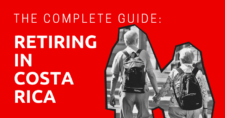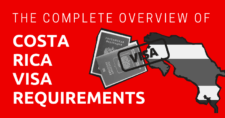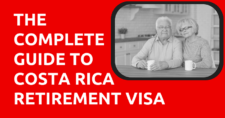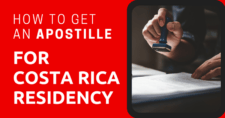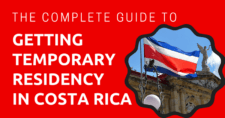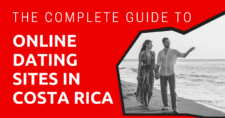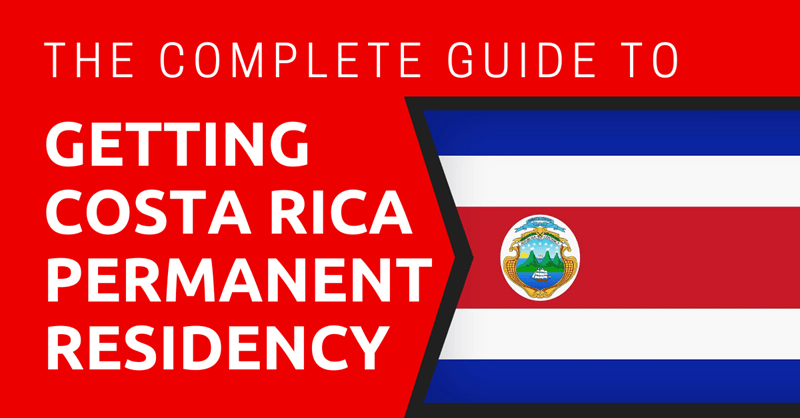
Costa Rica is a popular destination not only for travelers but also for those seeking a place to live the expat life. It boasts some of the planet’s most beautiful and diverse nature, and it has a long-standing reputation as a peaceful democracy.
Its rich culture, high literacy rate, absence of an army, and friendly, peace-loving populace make it a top choice for many expats. Costa Rica was recently named the world’s top destination for retirees in 2024 by International Living.
If you wish to live in Costa Rica permanently, you can obtain permanent resident status.
This is achievable by first acquiring temporary residency. After three years as temporary residents, you can apply for permanent resident status.
This article will guide you through the process of converting your status from a temporary to a permanent resident, including the benefits and limitations of permanent residency, requirements and documentation, the cost of conversion, the renewal process, and some practical tips from those who have experienced the process.
This article will take approximately 15 minutes to read. Don't have the time right now? No worries. You can email the ad-free version of the article to yourself and read it later!
Disclaimer: This article may include links to products or services offered by ExpatDen’s partners, which give us commissions when you click on them. Although this may influence how they appear in the text, we only recommend solutions that we would use in your situation. Read more in our Advertising Disclosure.
Contents
- Benefits of Obtaining Permanent Residency
- Limitations of Permanent Residency
- Requirements for Getting Permanent Residency in Costa Rica
- Steps to Acquire Permanent Residency
- How Long Does It Take to Get Permanent Residency?
- How to Become a Costa Rica Permanent Resident as a Retiree
- Getting Permanent Residency by Marrying a Costa Rican or Having a Costa Rican Child
- Practical Tips for Obtaining Costa Rica Permanent Residency
- Is Becoming a Costa Rican Permanent Resident Worth It?
- How to Renew Your Permanent Residency
- What Happens If My Permanent Residency Expires?
Benefits of Obtaining Permanent Residency
There are significant benefits and advantages to having permanent residency status in Costa Rica.
These are important for those planning to live or spend substantial time in Costa Rica each year.
Right to Live in Costa Rica Permanently
As a permanent resident with legal rights, you enter the country in the same manner as a citizen, with no limit on the number of days you can stay.
You have the convenience of a national identity designated as permanent. The DIMEX is a national identity card with your photo that allows you to complete every process a citizen can, except vote.
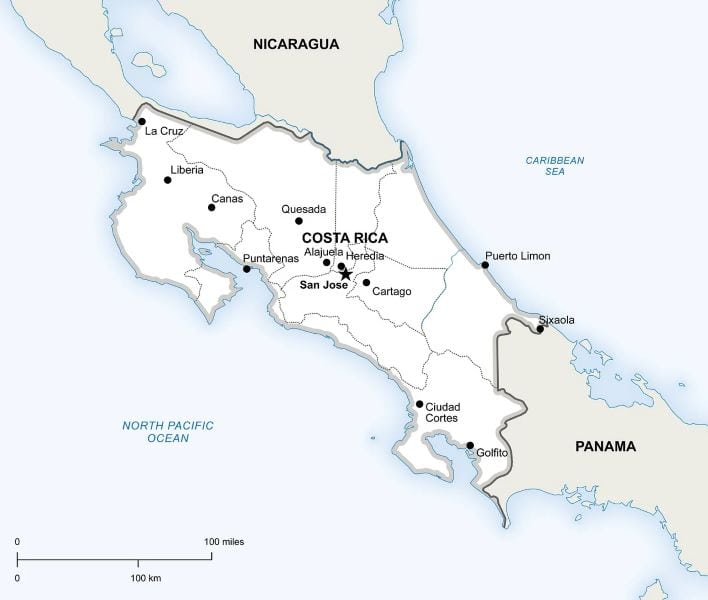
This card will display “residente permanente” (permanent resident). This immediately informs businesses, agencies, and individuals that you live in Costa Rica as a person with full legal rights.
You also have the option to obtain a “firma digital,” or digital signature, which makes daily life even easier.
Access to the Public Health System
For many United States expats, this is a key benefit due to the high cost of medical care in the United States.
All legal residents have access to medical care for a reasonable monthly payment (ours combined is $115 for husband and wife).
The monthly amount varies depending on the residency category you apply through; for retirees, it is based on the pension amount you report on your application. This benefit is directly transferable when moving from temporary to permanent residency.
Preexisting conditions are covered. There is no such thing as ineligibility or denial of coverage. Medications and doctor consultations are free.
When I first entered the system and requested medication (ongoing treatment), I received medication on the same day, along with a schedule for future medication pickups, and a series of lab tests, and heart, liver, prostate, and thorax exams, all free of charge.
While the Costa Rican public health system (the “caja”) is globally recognized as excellent, it is important to note that sometimes patients wait months for non-urgent major surgeries or treatments.
Short-term, ongoing, and emergency care are immediate and of high quality.
Each community has a public health clinic, while larger communities have a hospital.
Get a Costa Rican Driver’s License
You can drive in the country without any time limitations. Only legal residents or citizens can obtain a Costa Rican driver’s license.
Right to Work
Permanent residents have the right to work for an employer in the country, while temporary residents and tourists do not.
Residence Discounts
Many, if not most, tourist destinations in Costa Rica offer discounted entry to locals and residents. For example, it costs $16 US for a tourist to enter Manuel Antonio National Park, while it costs a citizen or resident about $3 US.
Access to Public Education System
Permanent residents of school age have access to the public education system in Costa Rica.
Path Toward Costa Rican Citizenship
Permanent residency is a path toward Costa Rican citizenship. After a person has been a permanent resident for five years, they can apply for citizenship.
Limitations of Permanent Residency
Voting
Neither temporary nor permanent residency grants the right to vote in Costa Rican elections.
Cost
Switching from temporary to permanent residency is much less expensive than the initial temporary residency application; however, there is still a cost of around $200 per person if you do the conversion yourself.
If you use an immigration lawyer or a visa service to help you, you will most likely pay an additional $150 – $300 per person.
Monthly Caja Payments
Monthly caja payments are required whether you use the public health system or not.
Requirements for Getting Permanent Residency in Costa Rica
Let’s examine the key requirements for obtaining permanent residency in Costa Rica.
- Have been a temporary resident for three years.
- Have a current DIMEX (national identity) card with all caja payments up to date (monthly payments for the public health system). In the case of a dependent spouse, they will need to renew their registration at the health system every two years, so ensure this is done before beginning the process of moving to permanent residency to avoid delays.
- Write a request in Spanish to change your immigration category, indicating the reason(s) you are requesting the change from temporary to permanent, authenticated by a Costa Rican lawyer or signed before a public official in Costa Rica.
- If this is the first request to change from temporary to permanent residency (rather than renewal), the applicant must pay fifty dollars (US $50.00) to a specific government bank account. Proof of deposit in the applicant’s name is required.
- Provide proof of payment to the government for two hundred dollars (US $200.00) or its equivalent in colones (Costa Rican currency), at the exchange rate of the day at the Central Bank, as a fee for the request to change the category from temporary to resident. This deposit must be made in the applicant’s name.
- Any documents that may be missing from your immigration file that correspond to the category under which you applied for temporary residency (pensionado, rentista, or investor) may need to be resubmitted (for example, birth certificate, or marriage certificate, criminal record, etc.). This is unlikely to be the case, but it bears mentioning as it does happen.
Steps to Acquire Permanent Residency
While the permanent residency status must be renewed periodically, the process is much cheaper, faster, and easier than the initial temporary residency process.
Here’s how you can obtain permanent residency status in Costa Rica step-by-step after being a temporary resident for three years.
- Write and submit a letter requesting a move from temporary to permanent residency status. Have it either translated into Spanish by an official translator or have your lawyer write it in Spanish for you to sign. Include your full name, your DIMEX number (national identity), and a reason for wanting to upgrade to permanent residency. There is no official format; however, your lawyer can suggest one or provide guidance. In the case of a couple, you will need a separate letter for each person.
- Ensure your “caja” payments are up to date and have a copy of your latest caja receipt or a record of payments.
- Make the appropriate payments (listed above) to the government bank accounts ($50 and $200). Your lawyer can provide the account numbers, or personnel at Banco de Costa Rica will assist if you explain what you are paying. (You may want to bring someone who speaks Spanish to ensure clear communication.)
- Submit your letter of request, current DIMEX card, and receipts for the required payments to the immigration office. Your lawyer can assist with this. If you prefer to complete the process yourself, visit the immigration website for information on making an appointment to submit the documents: Cancelación de Categoría Migratoria (migracion.go.cr). While the website is in English, you can use your browser to translate to English.
- When you submit your documents, they will keep your DIMEX card but will issue an official document stating your switch to permanent residency is in process. Keep this document to use in place of your DIMEX card until you are notified that your new card is available.
- Once you receive email notification that the card is ready, pick it up at the designated location.
- Check your new card to ensure all your personal information is correct and note the expiration date so you know when to renew it.
- If you are not fluent in Spanish, contact the lawyer or immigration service that assisted you in acquiring temporary residency. Since the requirements for permanent residency include documents and appointments in Spanish, bilingual professionals can be very helpful in facilitating the process, as well as alleviating stress and frustration.
How Long Does It Take to Get Permanent Residency?
Things move slowly in the immigration ministry, so it is usually a wait of at least a month once all the paperwork for permanent residency has been submitted.
Delays often occur, so be aware that it may take longer.
How to Become a Costa Rica Permanent Resident as a Retiree
It’s quite easy to become a permanent resident in Costa Rica as a retiree.
To do this, you first need to obtain temporary residency in the category of Pensionado (retiree), which requires you to show proof of a US$1,000 monthly income. This can be from your social security pension or a lifelong pension from a company.
After that, wait for three years, and then you can start your permanent residency process.
Read our guide to temporary residency in Costa Rica for more information.
Getting Permanent Residency by Marrying a Costa Rican or Having a Costa Rican Child
Marrying a Costa Rican or having a Costa Rican child allows you to bypass the temporary residency step and go directly to permanent residency.
If you fall into this category and cannot speak Spanish fluently, it is best to contact an immigration lawyer for help.
In both cases, marriage and having a child in Costa Rica, the applicant will need to submit the following to the regional immigration office:
- A letter in Spanish requesting permanent residency and stating the reason, along with the applicant’s full name, passport number, current address in Costa Rica, and email address. The letter should also include the full name and cedula number (national identity) of the Costa Rican spouse or child related to the applicant. This letter must be signed by the applicant in the presence of an immigration official or authenticated by a Costa Rican lawyer.
- Proof of payment of $50 US to Banco de Costa Rica account #242480-0 with a notation indicating the request for permanent residency.
- For those married to a Costa Rican, you may need to provide proof of the marriage (apostilled if outside Costa Rica) as well as attend personal interviews by immigration officials to verify the validity of the marriage.
Practical Tips for Obtaining Costa Rica Permanent Residency
The experiences of many who have completed the switch to permanent residency have resulted in the following tips, which should be helpful as you navigate the process.
Some of these also come from immigration attorneys in Costa Rica.
Prepare Documents in Advance
Collect all documents before applying. Having everything ready and in order will speed up the process.
Be Patient
Bureaucracy is a force to be reckoned with in Costa Rica, so try to be patient with the process. There will be times when you will not understand why things take as long as they do, but fretting over it will not change the situation. Remember, this is the land of “Pura Vida.”
Relax and enjoy the beauty of the country while your application is being processed.
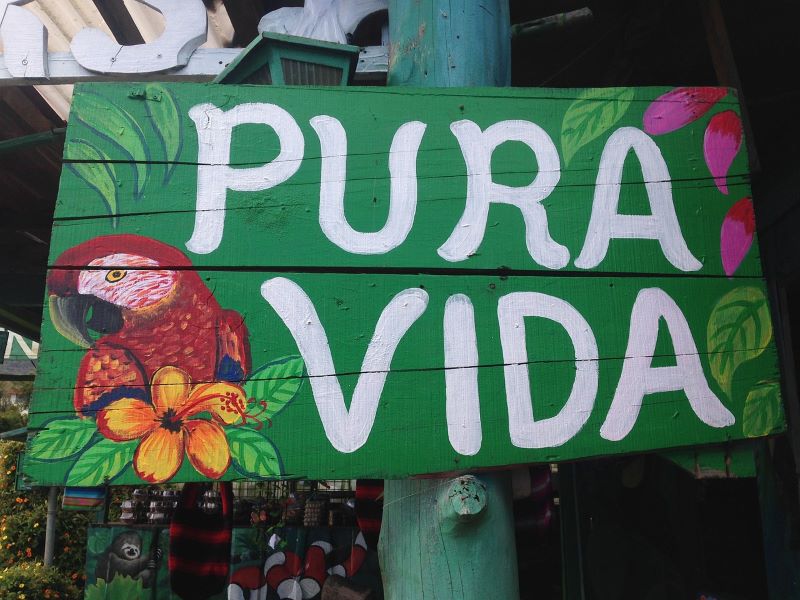
Monitor Your Case’s Progress
Having said that about patience, it is also advisable to monitor your case’s progress. Ask your lawyer or service any questions. Check on deadlines. Be in communication with your professionals. “The squeaky wheel gets the oil.”
Use an Immigration Lawyer
If you are not Spanish speaking, use a respected and recommended immigration lawyer or service. This will help eliminate frustration and delays. Ask about the timeframe, what exactly is included, efficiency, knowledge, etc. Don’t just look one up on Facebook or the internet.
Is Becoming a Costa Rican Permanent Resident Worth It?
This is a decision you as an individual or couple will need to make, depending on how long you plan to live in Costa Rica and how much you want to be a part of the culture and country.
If you plan to live there for a significant number of years, I advise doing it.
Not only does it make life easier and allows many rights within the country, but it also makes you feel even more a part of the wonderful culture and “pura vida” life of Costa Rica.
How to Renew Your Permanent Residency
Most permanent residency DIMEX cards are issued for two or three years.
You should start the renewal process at least three months before the expiration date of your new card.
In addition, you will want to complete the renewal process before the expiration date to avoid more bureaucracy or problems.
Book an Appointment
Make an appointment with an official authorized to start your renewal.
This appointment can be secured by phone at the immigration call center #1311. This appointment will be scheduled at a local post office or immigration office.
A more popular alternative is to make an appointment at Banco de Costa Rica. Call 800-BCRCITE or make an appointment through this link: https://bcrcita.bancobcr.com/citas/.
Prepare the Paperwork
Regardless of where your appointment is, arrive at the appointment with the following documents:
- Original DIMEX card that is going to expire.
- Proof of the most recent caja payment in the CCSS system.
- A signed letter declaring who you are, your DIMEX number, and the full names of both of your parents.
- Proof of payment for renewal fees to Bank of Costa Rica account #242480-0. (If you have your renewal appointment at Banco de Costa Rica, don’t pay in advance. You will pay at the bank during your appointment.) The amount is determined by the specifics of your case, but the total cost is under $150 per person.
- Valid passport.
Wait for the New DIMEX Card
You will be given a Comprobante de Solicitud, Tramite de documento de extranjeros DIMEX (Proof of Application of Processing Foreigners’ DIMEX).
This document can be used to prove your residency until your new card arrives.
You will be notified by email when your new card is available and where to pick it up.
What Happens If My Permanent Residency Expires?
If your permanent residency expires, you have only 30 days to complete the renewal or face fines of $3 per month or part of a month until renewal.
If the permanent resident remained outside the country for more than one year, he or she must present a document justifying the reasons and a duly legalized and authenticated or apostilled criminal record certification from the country where he or she stayed.
If a permanent resident is absent from the country for more than four years, the residency will be cancelled unless due cause can be established for reasons of health, study, family, etc.


